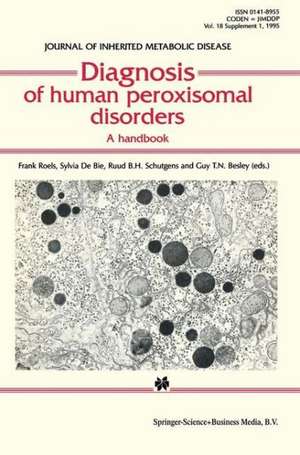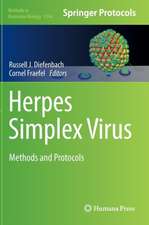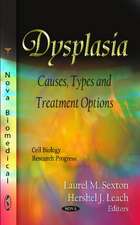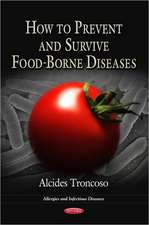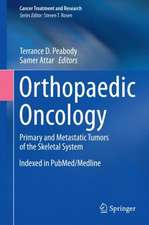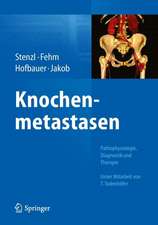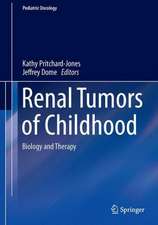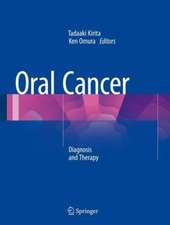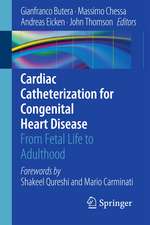Diagnosis of human peroxisomal disorders: A handbook
Editat de Frank Roels, Sylvia De Bie, R.B.H. Schutgens, G.T.N. Besleyen Limba Engleză Paperback – 31 ian 1997
Progress in our understanding of these conditions, and their diagnosis, results from the application of a variety of laboratory investigations. These include microscopic studies, analysis of metabolites (very long-chain fatty acids, bile acids, and plasmalogens), enzyme studies (peroxisomal beta-oxidation pathway and dihydroxyacetone phosphate acyltransferase), immunodetection of peroxisomal (membrane) proteins and molecular analysis of mutant DNA.
In order to encourage a greater awareness in this field and the diagnostic protocols required, an international course was organised in Gent, Belgium, in May 1994, on the clinical and biochemical diagnosis of peroxisomal disorders. A number of international experts in the field who provided intensive hands-on experience over 3.5 days, have now collected their course work and reviews together in this Handbook. The volume is introduced by Sidney Goldfischer, who in 1973 was the first to recognise the absence of peroxisomes in Zellweger syndrome, but whose observations were not fully appreciated for a further decade. This handbook provides the most comprehensive and detailed account of laboratory methods for the diagnosis of peroxisomal disorders. The methods are clearly presented and well illustrated, and should allow laboratories to introduce these methods into their repertoire.
Audience: Paediatricians, neurologists, clinical biochemists, pathologists, genetic counsellors, obstetricians, and GPs interested in the recognition, diagnosis and prenatal prevention of peroxisomal disorders.
Preț: 365.46 lei
Preț vechi: 384.70 lei
-5% Nou
Puncte Express: 548
Preț estimativ în valută:
69.94€ • 72.60$ • 58.32£
69.94€ • 72.60$ • 58.32£
Carte tipărită la comandă
Livrare economică 22 martie-05 aprilie
Preluare comenzi: 021 569.72.76
Specificații
ISBN-13: 9780792338550
ISBN-10: 0792338553
Pagini: 226
Ilustrații: V, 226 p. 85 illus.
Dimensiuni: 155 x 235 x 13 mm
Greutate: 0.34 kg
Ediția:Reprinted from the Journal of Inherited Metabolic Disease 18:1, 1995
Editura: SPRINGER NETHERLANDS
Colecția Springer
Locul publicării:Dordrecht, Netherlands
ISBN-10: 0792338553
Pagini: 226
Ilustrații: V, 226 p. 85 illus.
Dimensiuni: 155 x 235 x 13 mm
Greutate: 0.34 kg
Ediția:Reprinted from the Journal of Inherited Metabolic Disease 18:1, 1995
Editura: SPRINGER NETHERLANDS
Colecția Springer
Locul publicării:Dordrecht, Netherlands
Public țintă
ResearchCuprins
Clinical approach to inherited peroxisomal disorders.- Neuropathology of peroxisomal diseases.- DNA diagnosis of X-linked adrenoleukodystrophy.- Pre- and postnatal diagnosis of peroxisomal disorders using stable-isotope dilution gas chromatography — mass spectrometry.- Polyunsaturated fatty acids in the developing human brain, erythrocytes and plasma in peroxisomal disease: therapeutic implications.- Measurement of very long-chain fatty acids, phytanic and pristanic acid in plasma and cultured fibroblasts by gas chromatography.- Assay of plasmalogens and polyunsaturated fatty acids (PUFA) in erythrocytes and fibroblasts.- Measurement of dihydroxyacetonephosphate acyltransferase (DHAPAT) in chorionic villous samples, blood cells and cultured cells.- Immunoblot analysis of peroxisomal proteins in liver and fibroblasts from patients.- Measurement of peroxisomal fatty acid ?-oxidation in cultured human skin fibroblasts.- Activity measurements of acyl-CoA oxidases in human liver.- Immunocytochemical localization of peroxisomal proteins in human liver and kidney.- Liver and chorion cytochemistry.- Practical guide for morphometry of human peroxisomes on electron micrographs.- Secondary alterations of human hepatocellular peroxisomes.- Diagnostic work-up of a peroxisomal patient.
